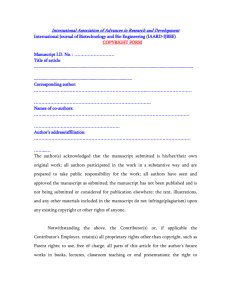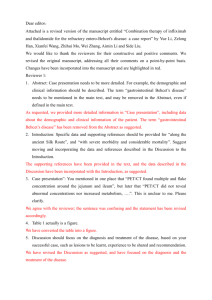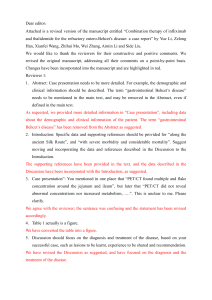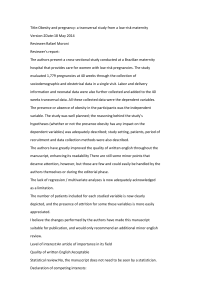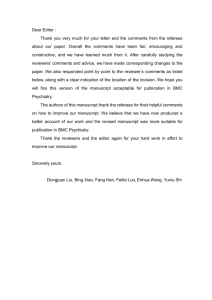Reviewer`s report
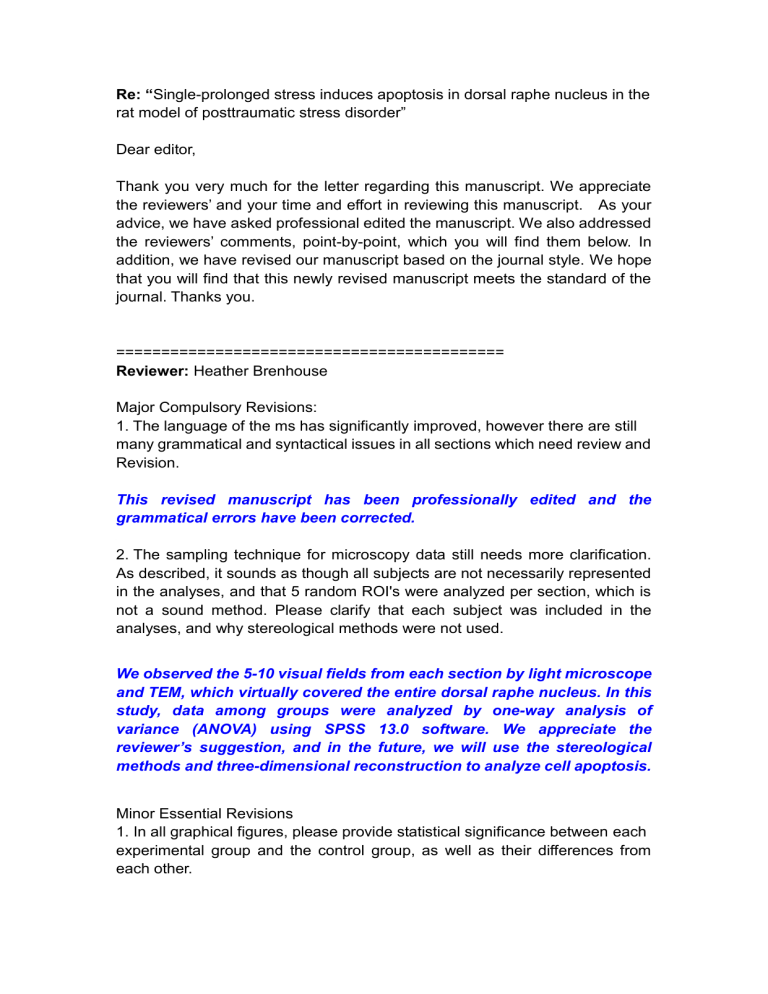
Re: “ Single-prolonged stress induces apoptosis in dorsal raphe nucleus in the rat model of posttraumatic stress disorder”
Dear editor,
Thank you very much for the letter regarding this manuscript. We appreciate the reviewers’ and your time and effort in reviewing this manuscript. As your advice, we have asked professional edited the manuscript. We also addressed the reviewers’ comments, point-by-point, which you will find them below. In addition, we have revised our manuscript based on the journal style. We hope that you will find that this newly revised manuscript meets the standard of the journal. Thanks you.
===========================================
Reviewer: Heather Brenhouse
Major Compulsory Revisions:
1. The language of the ms has significantly improved, however there are still many grammatical and syntactical issues in all sections which need review and
Revision.
This revised manuscript has been professionally edited and the grammatical errors have been corrected.
2. The sampling technique for microscopy data still needs more clarification.
As described, it sounds as though all subjects are not necessarily represented in the analyses, and that 5 random ROI's were analyzed per section, which is not a sound method. Please clarify that each subject was included in the analyses, and why stereological methods were not used.
We observed the 5-10 visual fields from each section by light microscope and TEM, which virtually covered the entire dorsal raphe nucleus. In this study, data among groups were analyzed by one-way analysis of variance (ANOVA) using SPSS 13.0 software. We appreciate the reviewer’s suggestion, and in the future, we will use the stereological methods and three-dimensional reconstruction to analyze cell apoptosis.
Minor Essential Revisions
1. In all graphical figures, please provide statistical significance between each experimental group and the control group, as well as their differences from each other.
We now have provided the statistical significance and the difference between each experimental group and the control group, which are highlighted in RED in Figure Legends (Figure 2, 4, 6, 8, 10, 11, 13).
Reviewer: Carsten Wotjak
(1) In their response letter, the authors mention that controls were also exposed to ether anaesthesia. This would be an important control for the specificity of the SPS effects in terms of apoptosis. Yet, the manuscript does not contain any information about such a control. Therefore, my concern from the first revision process is still valid. At least, the authors have to critically discuss this point (it is surprising that a traumatic event should cause apoptotic processes in a variety of brain structures with the same temporal profile).
We apologize to the reviewer that the previous letter mistakenly stated that rats were exposed to ether for anaesthesia. In fact, in this experiment, neither control nor SPS groups were exposed to ether. We have deleted the sentence “the rats were then exposed to ether vapor until they lost consciousness ” in the revised manuscript.
Traumatic event may cause apoptosis in other parts of the brain and other organs. Our previous studies have shown that SPS induces apoptosis in the brain's structure such as hippocampus and amygdala.
In this study, we found apoptosis in the dorsal raphe nucleus after SPS stimulation, and it occurred at the same time point. The reasons there are
to be our follow-up study.
(2)
In my previous letter I’ve asked to merge the figure numbers mentioned in the text with those used for the figures. Even though the authors state that they have done so, the figure numbers shown on the graph by no means fit with those in the text. With some effort, it was possible to go through the results section. I have to mention that I will not review the manuscript anymore, if such basic prerequisites are not met.
We apologize that this correction failed to be incorporated into the version we submitted last time. We have ensured that the newly revised
version has corrected labels, which are highlighted in RED in the text and Figure Legends.
(3) Again, going back to one of my previous comments: The authors have still to specify the protocol of generating cell lysates for Western blot analyses to
make clear that it does not contain Cyt-c from intact mitochondria. Without such a specification, it is premature to speak about “Cyt-c released from mitochondria”.
After carefully studying the review er’s comments, we agree with the reviewer. The results from the Western blotting analyses indicated that the expression of cytochrome C was increased after SPS, but did not directly demonstrate an increase of release of cyt-C from mitochondria.
We now have revised the interpretation in the revised manuscript.
(4) In the end of the Material and Methods section, the authors state that they presented the data “as means +/- standard (SD) error of means”. The abbreviation “SD” cannot be used in this context, since it stands for “standard deviation”; the standard error of mean has to be abbreviated by “SEM”.
We very much appreciate the reviewer’s careful reading of the manuscript and the valuable suggestions. We have made corresponding
corrections, which are highlighted in RED in the text and Figure Legends.





